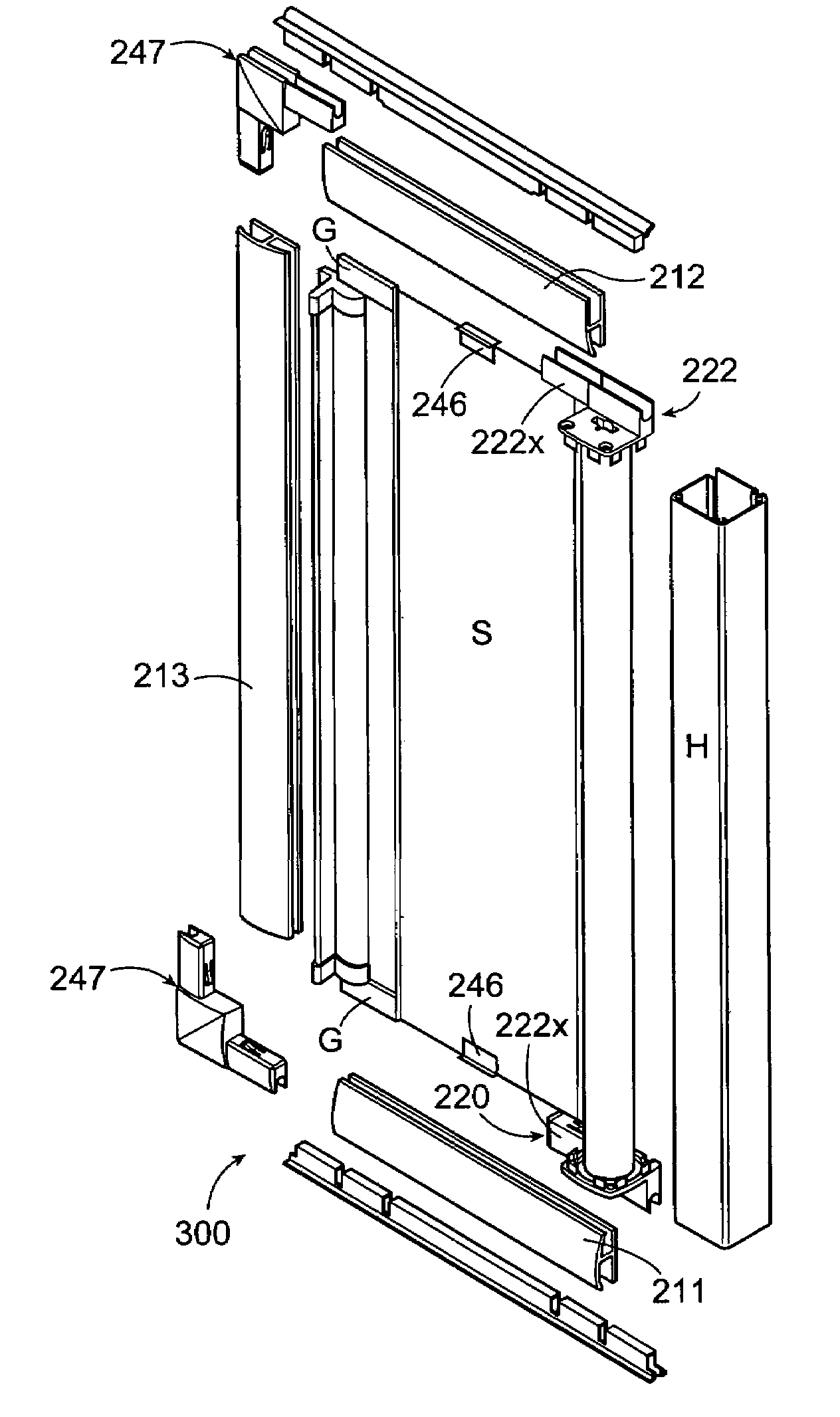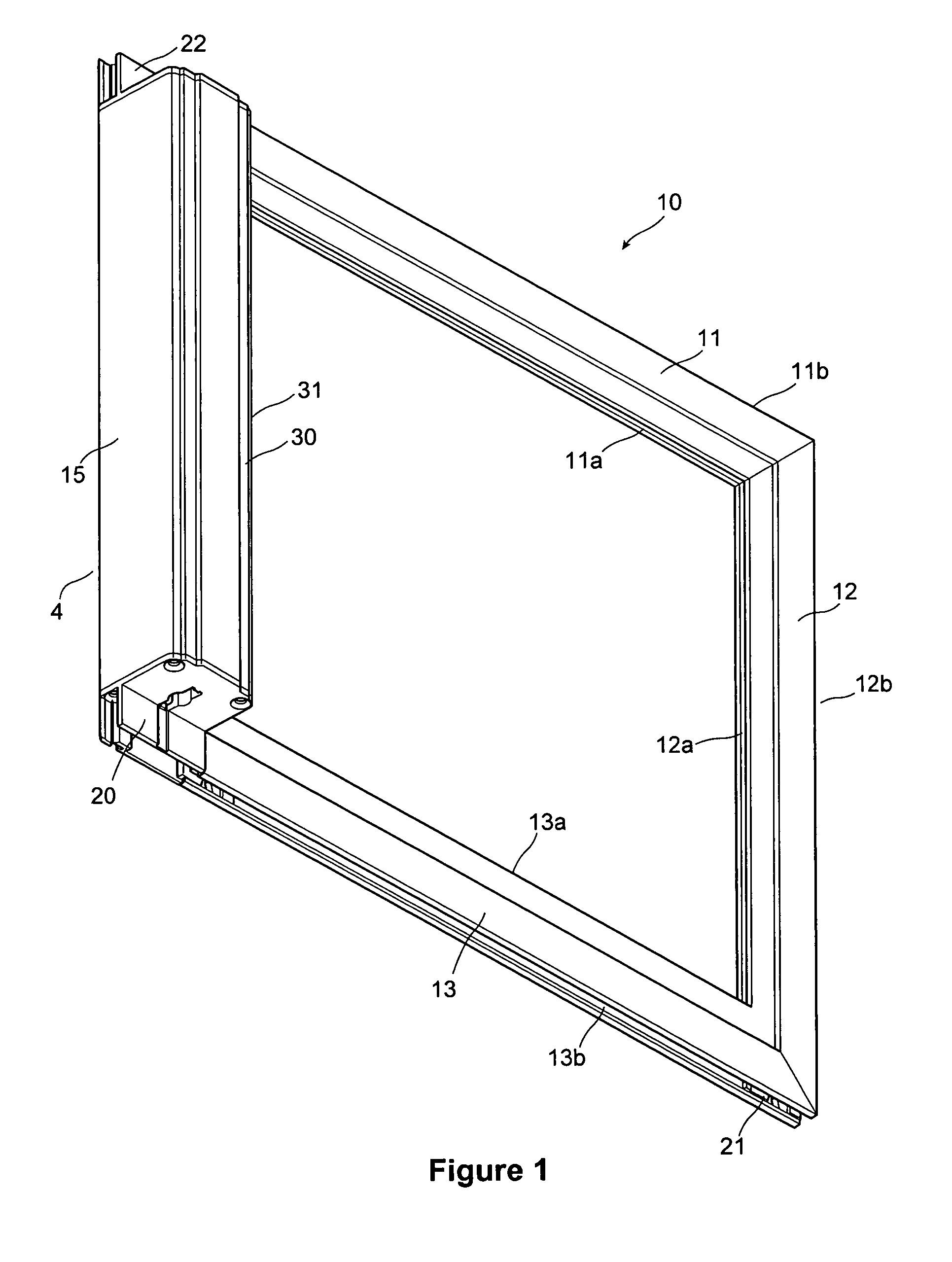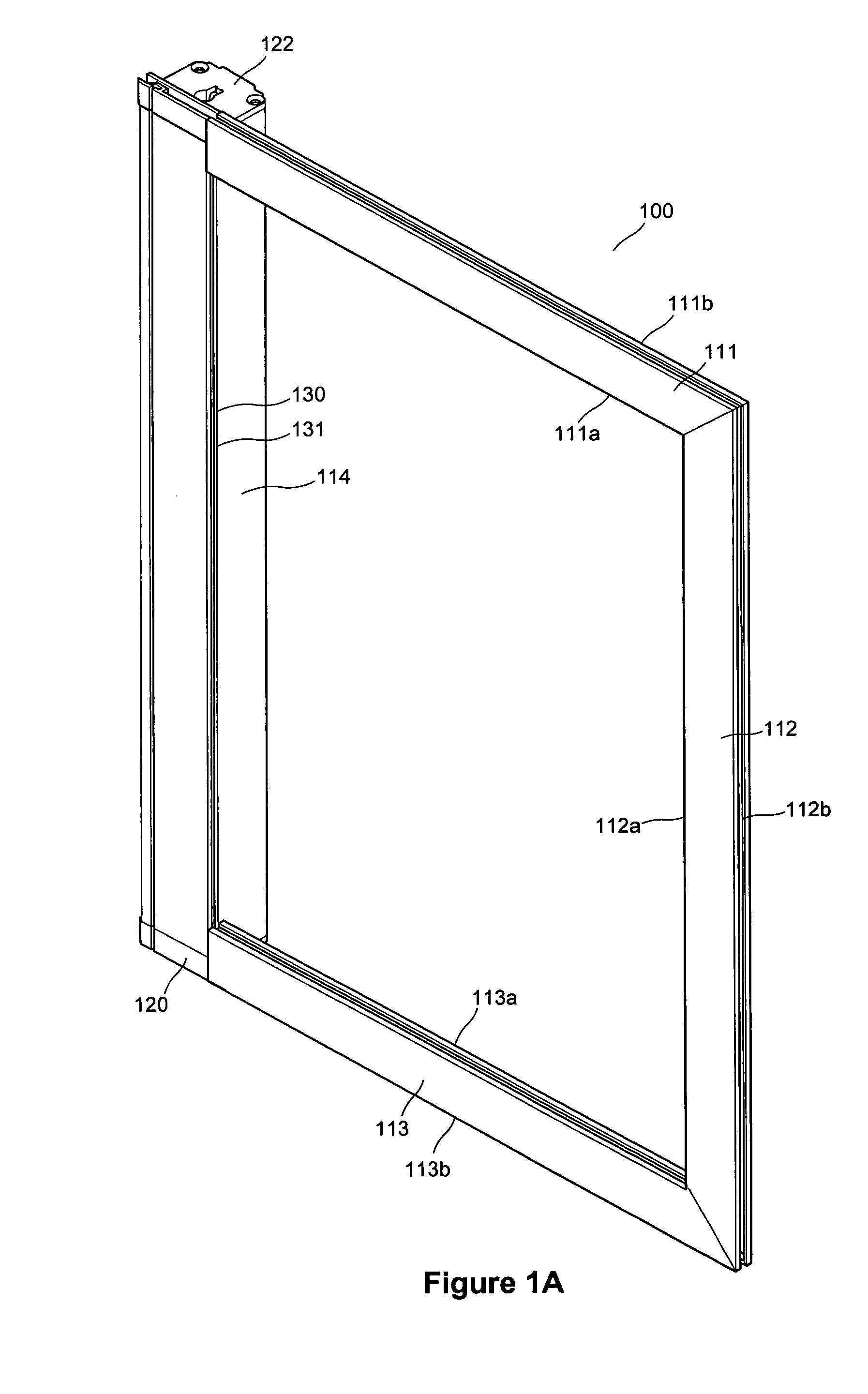Screen frame with integral roll screen compartment and improvements thereof
a technology of screen frame and roll screen compartment, which is applied in the direction of sunshade, curtain suspension device, building components, etc., can solve the problems of unsatisfactory needs, unsatisfactory needs, and inability to meet the needs of homeowners, so as to achieve the effect of reducing the amount of effort and facilitating and simply placing or dropping into position
- Summary
- Abstract
- Description
- Claims
- Application Information
AI Technical Summary
Benefits of technology
Problems solved by technology
Method used
Image
Examples
Embodiment Construction
[0098]Although the following description focuses on a patio door screen, it is not intended that the invention be limited in this aspect. The invention also may be embodied with other doors, windows, or the like. Those skilled in the art will recognize these other uses without limitation.
[0099]Referring generally to the figures, there is illustrated a screen frame assembly (10) which includes a screen housing (14) and frame sections (11, 12, and 13) making up the frame (10). The assembly (10) slides within an opening of a closure assembly such as a patio door. The sliding action of the screen frame (10) is accomplished by sliding the screen frame along the edges (11b and 13b) within tracks or channels normally found within a patio door assembly. These channels are found in the sill and the header of the door assembly. The screen frame (10) therefore moves as is known in prior art sliding constructions. However, integral with the framing section (10) is a compartment (15) within whic...
PUM
 Login to View More
Login to View More Abstract
Description
Claims
Application Information
 Login to View More
Login to View More - R&D
- Intellectual Property
- Life Sciences
- Materials
- Tech Scout
- Unparalleled Data Quality
- Higher Quality Content
- 60% Fewer Hallucinations
Browse by: Latest US Patents, China's latest patents, Technical Efficacy Thesaurus, Application Domain, Technology Topic, Popular Technical Reports.
© 2025 PatSnap. All rights reserved.Legal|Privacy policy|Modern Slavery Act Transparency Statement|Sitemap|About US| Contact US: help@patsnap.com



